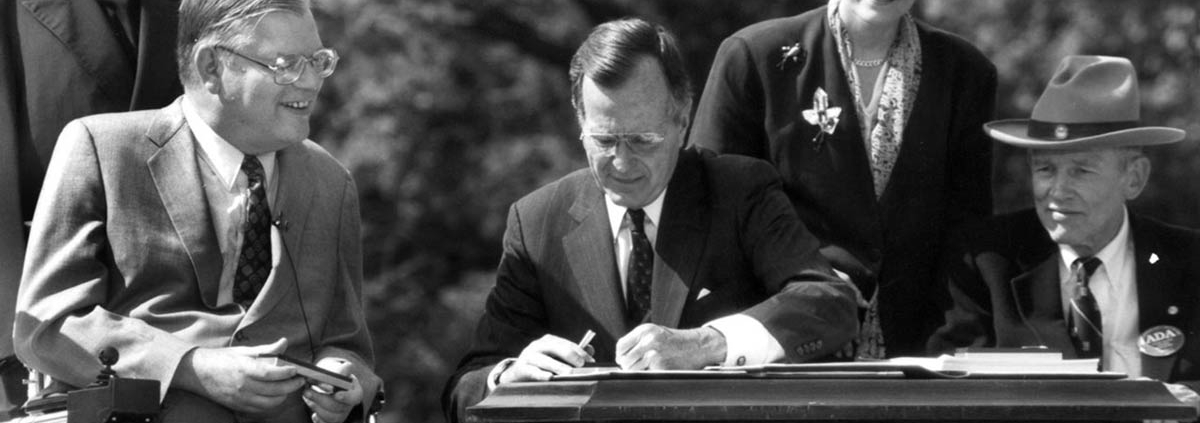Recognizing 25 Years of the Americans with Disabilities Act

In 1990, the landmark decision to pass the Americans with Disabilities Act (ADA) was made. This year marks the 25th anniversary of its momentous passing. The law makes it illegal to discriminate against any qualified person with a disability in all areas of public life including: employment, education, transportation and all places open to the public. After the law came into effect, legal debates ensued over the definition of having a disability under the law. After troubles with the narrowly defined law, Congress issued the ADA Amendments Act in 2008 to have a broader definition. This law focused on whether or not discrimination occurred, not if the person had a disability. Although much progress has been made for people with disabilities to use public transportation, enter a building by oneself or obtain a job, there is still more that can be done.
What seems to be the most pressing concern is the employment of people with disabilities. The initial law dealt mainly with the physical barriers that prevent access for people of all abilities. Over time, architectural mandates have been issued to make schools, courthouses, baseball stadiums and the like manageable locations for all persons. However, the area of employment for Americans with disabilities has room for the most growth. President Obama spoke about the 25th anniversary of ADA earlier in July and focused on the unemployment issue. He announced his commitment to disability rights for the rest of his time in office and beyond.
One organization doing work to combat the prejudice against potential employees with disabilities is The Arc. The Arc is the largest national community-centric organization that serves individuals with intellectual and developmental disabilities. The Arc provides transportation and job coaches when they are first being trained to increase work quality and lower concerns. In Baltimore, their work has been notable because of one regional company’s previously staunch stance against workers with disabilities that has changed into open acceptance of them. With reasonable accommodations, an employer can turn concerns about safety into creative solutions, but only with an open mind.
Today, the effects of ADA have improved the lives of persons with disabilities, but more awareness, education and inclusion will come over time. Nineteen percent of the population or 56.7 million Americans live with disabilities, but as high as 70% of those Americans have been excluded from the workforce. The federal government stands as a model employer of individuals with disabilities with a higher percentage of people with disabilities in Federal service in 33 years. Twenty-five years ago, the issue was just getting in the door, but with the Americans with Disabilities Act in effect, we can work to make a more inclusive America with equality for all abilities.
